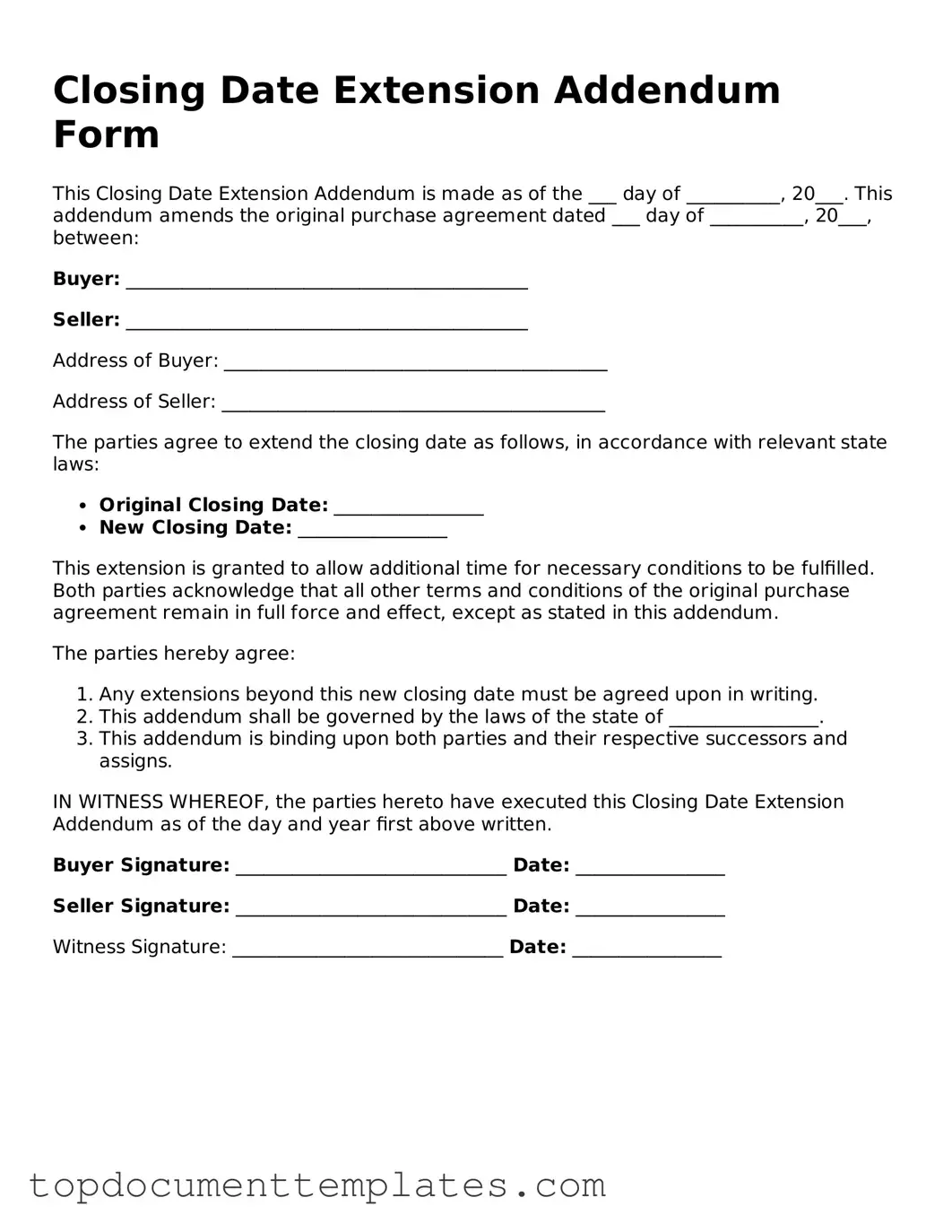The Closing Date Extension Addendum Form serves as a crucial document in real estate transactions, providing a structured way for parties involved to modify the original closing date outlined in their purchase agreement. This form is typically utilized when unforeseen circumstances arise, preventing the timely completion of the sale. It allows both buyers and sellers to agree on a new closing date, ensuring that all parties are aligned and aware of the updated timeline. By detailing the reasons for the extension, this addendum helps maintain transparency and fosters communication between the involved parties. Moreover, it includes spaces for signatures and dates, which formalizes the agreement and ensures that all necessary legalities are observed. Overall, the Closing Date Extension Addendum Form is an essential tool that helps facilitate smooth transactions, accommodating the needs of buyers and sellers alike while minimizing potential conflicts or misunderstandings.
